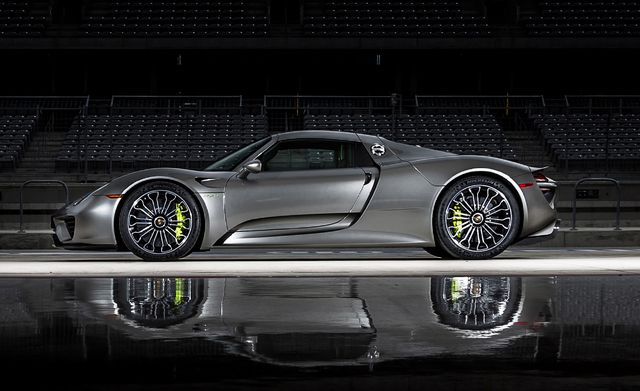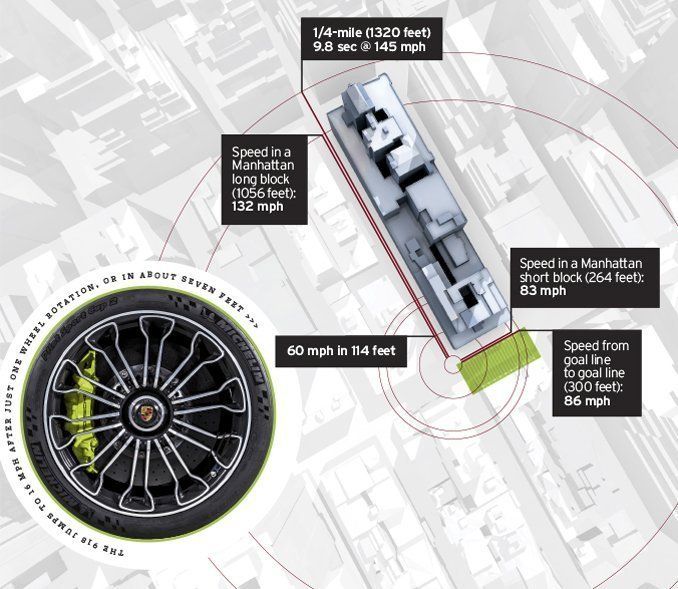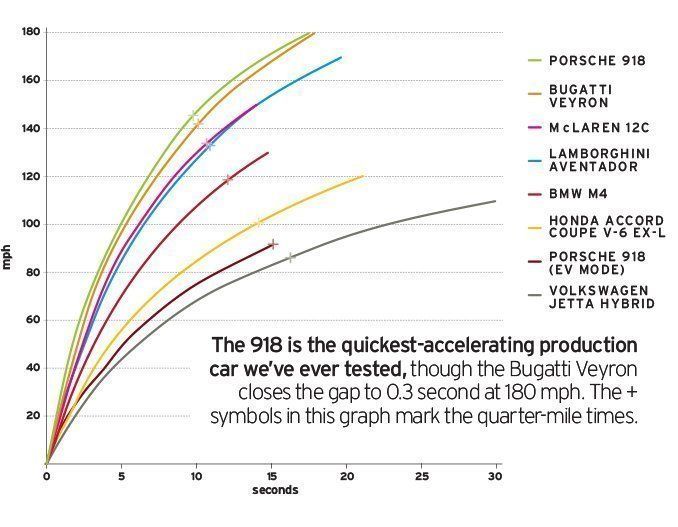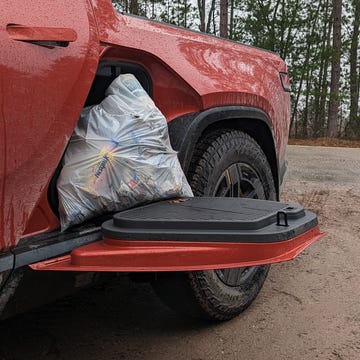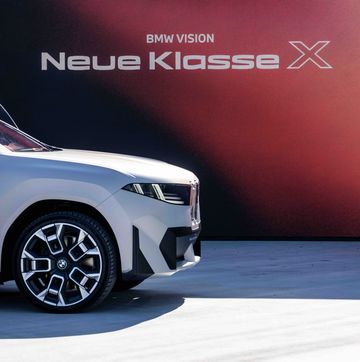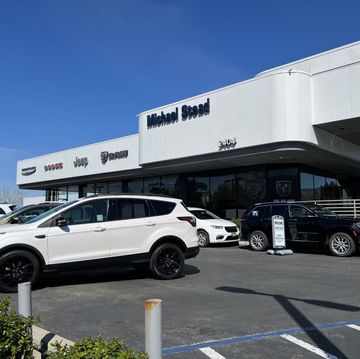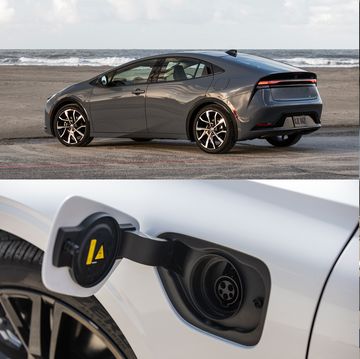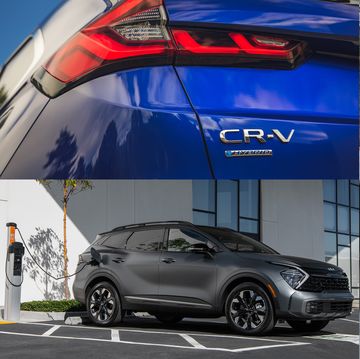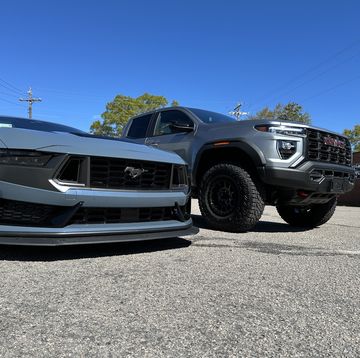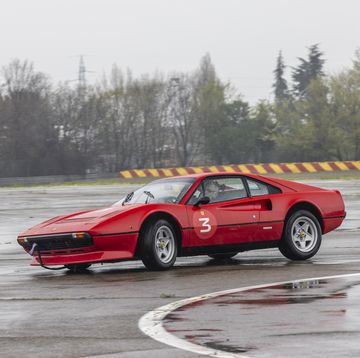Flush as we are with nutty performance cars at the moment, we should remember that automobiles as quick as the Porsche 918 don’t come along too often. In 2008, the quickest (and fastest) production car we had ever tested was the Bugatti Veyron 16.4. It could hit 60 mph in 2.5 seconds and burn the quarter-mile in 10.1 ticks. The Porsche 918 crushes the original million-dollar car with a 2.2-second sprint to 60 mph and a 9.8-second quarter-mile time. To put that in perspective, 0.3 second is about how long it takes you to blink. As acceleration times shrink, their deltas become increasingly larger percentage gains, so the 918’s third-of-a-second edge over the Veyron represents an astounding achievement.
Algebra problem of the day: Two 918s accelerate from rest in a one-mile-long tunnel from opposite ends. What is their closing speed at the center of the tunnel?
Answer: Greater than 350 mph.
Launch control takes the guesswork out of testing the 918. Two electric motors with a combined 285 horsepower work in concert with the flat-crank, 608-hp 4.6-liter V-8. By routing torque—as much as 830 pound-feet—to all four wheels, the 918 maximizes traction.
If we had a little more testing room, we might have been able to hit 200 mph and dethrone the Veyron’s 25.5-second zero-to-200-mph time. (It’s also the only car for which we have that stat.) But even Porsche admits that the Veyron accelerates harder at higher speed.
Glancing at the speed display for half a second while going 187 mph—the fastest speed we achieved—makes 137 feet of road disappear. That’s five feet less than it takes the 918 to stop from 70 mph in a full panic situation.
There is very little wheelspin during the 918 launch. But assuming for a moment that there is no at-launch wheelspin whatsoever, the 918 jumps to 16 mph after just one wheel rotation, or in about seven feet. Its massive 325/30ZR-21 Michelin Pilot Sport Cup 2 rear tires ($729 apiece) stand nearly 29 inches tall, almost two inches taller than a 911 Turbo S’s rear rubber. Increasing the overall diameter of a tire increases the area of the contact patch. That’s why Top Fuel dragsters’ tires are engineered to expand in response to inertial forces at launch. Widening the tires helps to increase the lateral limit.
For more—including detailed driving impressions—check out our previously published reviews of both a near-production 918 prototype and a final-spec car.
PHOTO GALLERY: 85 photos of the incredible 918 Spyder
K.C. Colwell is Car and Driver's executive editor, who covers new cars and technology with a keen eye for automotive nonsense and with what he considers to be great car sense, which is a humblebrag. On his first day at C/D in 2004, he was given the keys to a Porsche 911 by someone who didn't even know if he had a driver's license. He also is one of the drivers who set fast laps at C/D's annual Lightning Lap track test.
